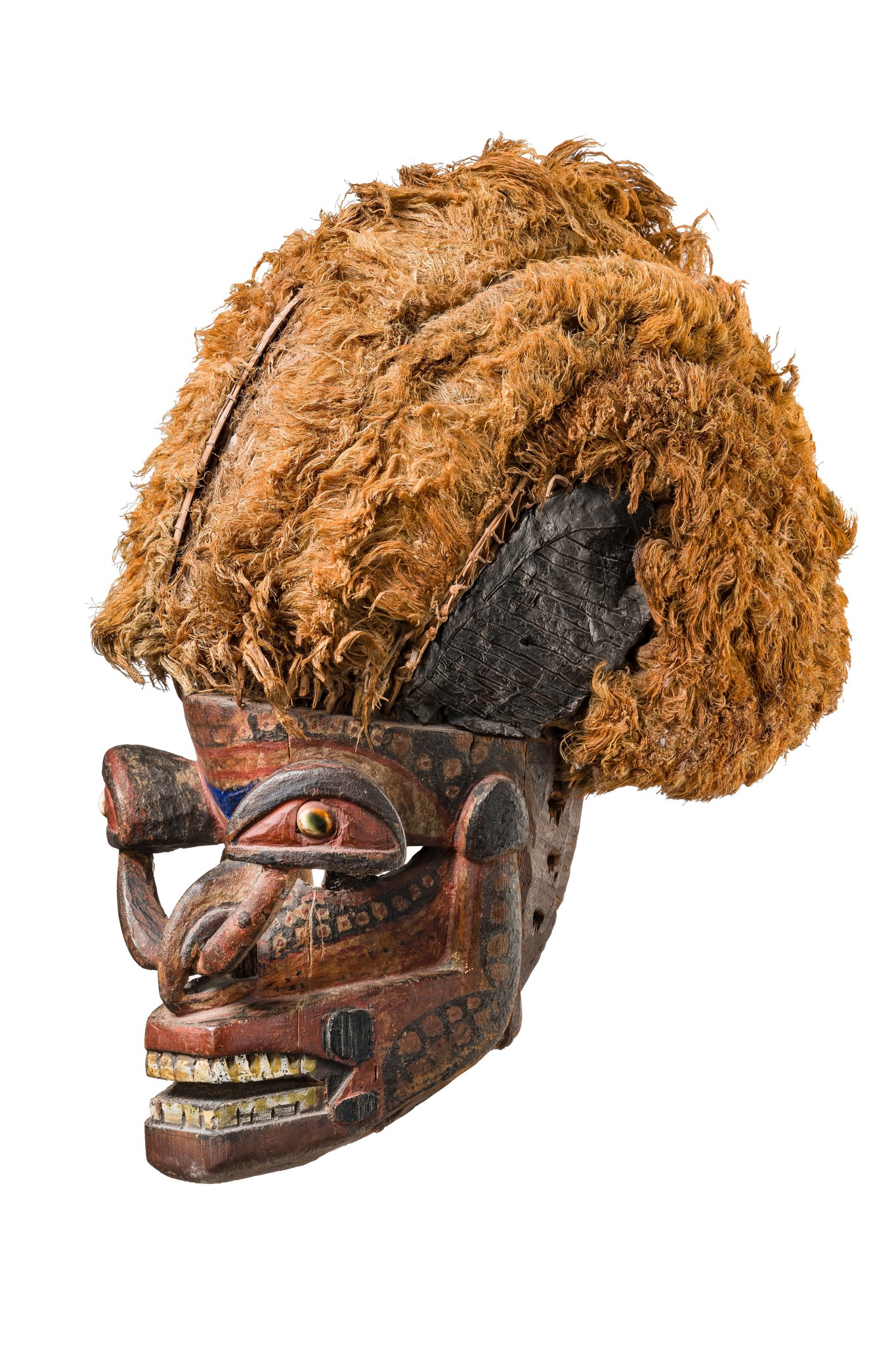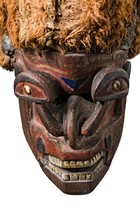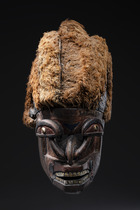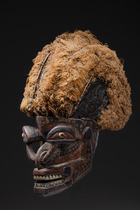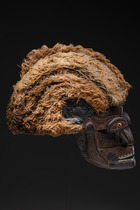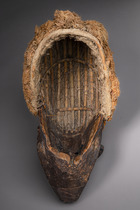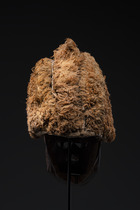Masque casque "tatanua" · Papouasie-Nouvelle-Guinée - Archipel Bismarck - Nouvelle Irlande · ID: 3052154
Description
wood, rattan, plant fibres, shell, pigments, clay-like substance, rest.
“Tatanua” refers both to the mask and to the dance in which it appears, and which is part of the large-scale funeral ceremonies known as “malagan”, which form the centre of ceremonial life in New Ireland.
“Tatanua” were danced in public, either in pairs, or in groups or lines of men. In 1907 Richard Parkinson published a description of a ceremony that he witnessed on a visit to New Ireland. The masked dancers performed, accompanied by drumming, wearing garlands of leaves and a leaf garment covering the lower body.
Some six weeks before one of these large-scale mortuary celebrations took place, the dancers begin sleeping and eating within the sponsors house. During this time they practice a form of abstinence in order to develop male “strength” for the performance. Not only are physical contacts with women taboo, the men may not eat peeled taro and fish. Should a dancer fail to develop this male capability through abstinence, the mask will constrict his head, causing blood to run from his temples and nostrils.
Earlier ethnologists believed that “tatanua” masks were representations of the spirit or soul (“tanua”) of dead people. In recent surveys, this interpretation has been rejected. Instead, it is said that the “tatanua” is made “to look just like a true man”. It is believed that “tatanua” represents a kind of idealised male appearance. Parkinson suggests that the characteristic helmet-like parting imitates a traditional hairstyle worn by young men at funeral ceremonies.
Hubert Geisler was born on 9 March 1864 in Mittelwalde, Silesia. As an ornithologist and natural history collector, he worked in Ceylon and Borneo from 1887 to 1889. He supplied exotic bird skins to the natural history dealer Wilhelm Schlüter in Halle an der Saale and the Royal Zoological and Anthropological-Ethnographic Museum in Dresden.
In 1890, he arrived in Finschhafen, Papua New Guinea. In 1891, he entered the service of the New Guinea Company, where he worked in Herbertshöhe, initially as a plantation supervisor and, from 1897, as an administrator. Herbertshöhe (Kokopo from 1919), is the capital of the province of East New Britain on the island of New Britain. From 1909 to 1921, he was administrator and authorised signatory in Stephansort, an important trading post of the New Guinea Company in Astrolabe Bay.
In 1921, Geisler was expelled along with other Germans and taken to Batavia on the Rotterdam Lloyd steamship Djambi. He travelled via Rotterdam back to Germany, where he lived in Würzburg from 1922 onwards (source: Biographisches Handbuch, Berlin 2002).
Littérature comparée
Biographisches Handbuch Deutsch-Neuguinea 1882-1922, Kurzlebensläufe ehemaliger Kolonisten, Forscher, Missionare und Reisender, 2. verb. Aufl., Berlin 2002 Gunn, Michael, Ritual Arts of Oceania - New Ireland, Genf, Mailand 1997, p. 146 f.

